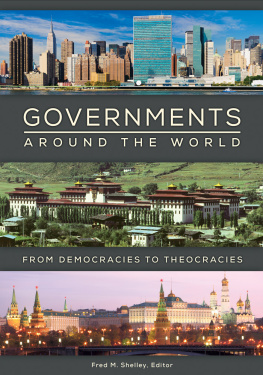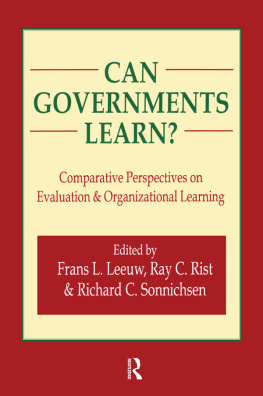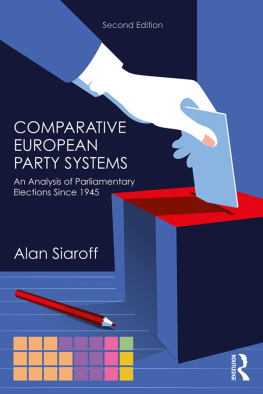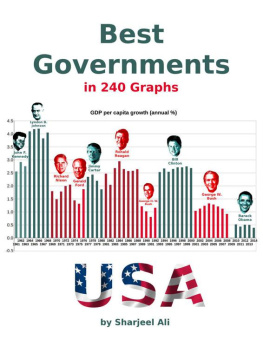Governments around the World
Governments around the World
From Democracies to Theocracies
Fred M. Shelley, Editor

Contents
Copyright 2015 by ABC-CLIO, LLC
All rights reserved. No part of this publication may be reproduced, stored in a retrieval system, or transmitted, in any form or by any means, electronic, mechanical, photocopying, recording, or otherwise, except for the inclusion of brief quotations in a review, without prior permission in writing from the publisher.
All entries in this book have been written by ABC-CLIO staff. Exceptions include the introductions to the constitutions and charters, which have been written by Fred M. Shelley, and otherwise noted entries.
Library of Congress Cataloging-in-Publication Data
Governments around the world : from democracies to theocracies / Fred M.
Shelley, editor.
pages cm
Includes bibliographical references and index.
ISBN 978-1-4408-3812-5 (print : alk. paper) ISBN 978-1-4408-3813-2 (e-book)
1. Comparative government. I. Shelley, Fred M., 1952
JF51.G685 2015
320.3dc23 2014045310
ISBN: 978-1-4408-3812-5
EISBN: 978-1-4408-3813-2
19 18 17 16 15 1 2 3 4 5
This book is also available on the World Wide Web as an eBook.
Visit www.abc-clio.com for details.
ABC-CLIO, LLC
130 Cremona Drive, P.O. Box 1911
Santa Barbara, California 93116-1911
This book is printed on acid-free paper 
Manufactured in the United States of America
All of the inhabited portions of the earths surface are divided into countries. The contemporary world contains approximately 200 countries, each of which has control or sovereignty over the territory that it occupies. Each of these countries has a government, which is responsible for functions such as national defense, economic development, the provision of infrastructure such as transportation and communications, and procedures by which disputes are resolved. However, governments in each state operate differently. Each is unique, although countries can be grouped on the basis of similar governance. The theme of this volume is to explore the differences among the structure and operations of the governments of the world.
Governments vary from one another in several ways. Perhaps the most fundamental distinction is between authoritarian and democratic systems of government. In democracies, including the United States, governance rests in the hands of the people and their elected officials. In authoritarian societies, however, governance is concentrated in the hands of only one person, or a small minority of the population, who hold power over the rest of the countrys citizens.
Another difference among governments involves the degree to which power is held at the national level as opposed to being divided between national and local authorities. The United States is a federal state. Power is shared officially between the U.S. federal government and the governments of the individual states. This is also the case in Canada, Mexico, Germany, Brazil, India, and other countries. In other countries, all power is held at the national level. Local government, when it exists at all, is merely an instrument of the state, with the purpose of enforcing national policies at a local level.
The structure, operations, functions, and powers of government in most countries are outlined in these countries constitutions. A constitution specifies the process by which governments are chosen and what they are empowered to do. In the United States and other countries, interpretation of the legality of various laws and policies is based on whether these laws and policies are consistent with the countrys constitution. A law declared to be unconstitutional is no longer in effect. Of course, constitutions are often ignored by governments in power, especially in countries governed by authoritarian regimes. For example, the constitution of Eritrea, which was adopted in 1993, states that democratic elections are to be held at regular intervals. However, no elections have actually been held during the two decades during which the constitution has been in effect.
An important function of government is to guarantee and protect human rights. The constitutions of most countries specify various rights that are held by all citizens and residents of these countries. Human rights take a variety of forms. Someincluding the right to vote, the right of free speech, the right to a free press, and the right to assemble peaceablymay be termed political rights. In most countries, rights enumerated in the constitutions include the rights of persons involved in legal and dispute resolution processes. These include the right to a fair trial and the presumption that one accused of a crime is innocent until proven guilty. Many constitutions also include what might be termed social and economic rights. These include the right to health, the right to social security, and the right to education. The United States is unusual among countries of the world in that its constitution does not identify these social and economic rights as fundamental rights.
Most countries belong to one or more international organizations, such as the United Nations, the North Atlantic Treaty Organization, the European Union, and the African Union. Each of these international organizations, and many others, is governed by a constitution or charter. As with constitutions of individual countries, these charters specify the responsibilities of their member countries. They also deal with rights associated with a countrys being part of the larger organization. For example, the European Union (EU) guarantees that citizens of all EU countries have the right to travel and move freely among the member nations.
This volume is divided into several sections. The first three chapters deal with governments and governmental processes associated with three major forms of governments: democracies and republics, communist states, and monarchies. Some countries have governments that can be considered transitional among these categories, combining aspects of two or all three of them. Examples are given in Chapter 4. A few countries are run explicitly on the basis of religious principles. These countries, discussed in Chapter 5, are known as theocracies. The governments of some countries do not fit easily into any of the categories listed above. These can be identified as other government types, as covered in Chapter 6.
Chapter 7 deals with some of the worlds largest and most important transnational organizations, including the United Nations and the European Union. A major issue associated with governing these organizations is the relationship between the international organizations and their individual members. Throughout the volume, excerpts from constitutions and charters are presented and discussed, providing valuable context underlying the understanding of different types of governance around the world. At-a-glance Facts and Figures tables accompany each country profile as well. Appendix A, Opposing Viewpoints, deals with five critical questions regarding different geopolitical issues, such as What will Cuba be like in 2022? An introduction to the issue is provided, and two scholars have written opposing-viewpoint responses. Appendix B provides a comprehensive listing of every current country in the world and their government types. This volume will provide readers with a better understanding of the major types of government organizations of the world, while also comparing and contrasting specific countries that abide by variations on those systems.
Next page









